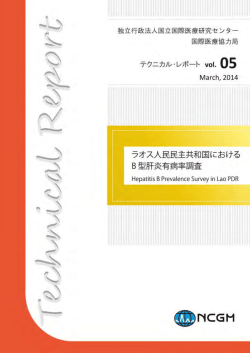
MEASUREMENT OF ESTIMATED GLOMERULAR FILTRATION
Hirosaki University Repository for Academic Resources Title Author(s) MEASUREMENT OF ESTIMATED GLOMERULAR FILTRATION RATE IS USEFUL IN STROKE PATIENTS Kitajima, Yu Citation Issue Date URL 2014-03-20 http://hdl.handle.net/10129/5377 Rights Text version author http://repository.ul.hirosaki-u.ac.jp/dspace/ 細則様式第1-2号 学位請求論文の内容の要旨 領 域 氏 名 健康支援科学領域 分 野 健康増進科学分野 北嶋 結 (論文題目) MEASUREMENT OF ESTIMATED GLOMERULAR FILTRATION RATE IS USEFUL IN STROKE PATIENTS (脳卒中患者において推定糸球体濾過値の有用性について) 主 査 高見秀樹先生 副 査 米坂勧先生 副 査 井瀧千恵子先生 副 査 山辺英彰先生 Background: Chronic kidney disease (CKD) is a major worldwide public health problem. Many prospective epidemiologic studies have shown that patients with CKD have high risk of developing CVD and stroke, although CKD is not considered a conventional cardiovascular risk factor. Accurate assessment of renal function is very important in providing proper medical treatment and nursing care. However, an evaluation of renal function is difficult in stroke patients due to the presence of post-void residual urine associated with neurological disorders. Moreover, it is difficult for elderly patients to collect urine samples in a timed manner, and thus a clearance test is not easily performed to assess renal function. An appropriate evaluation of renal function in stroke patients will help promote better nursing care, diet, 【細則様式第1-2号続き】 exercise, daily life guidance, and self-management, but the difficulty lies in comparing estimated glomerular filtration rate (eGFR) values with clearance test results in these patients. Purpose: We aimed to determine the prevalence of CKD in stroke patients and demonstrate the validity of eGFR measurement to assess renal function in patients after stroke. Subjects and Methods: We examined the prevalence of CKD among our patients. CKD criteria consist of findings that suggest renal injury, such as abnormal urinalysis, abnormal renal imaging, abnormal blood biochemistry, abnormal renal histology, and a low eGFR (<60 ml/min/1.73 m2). In this study, urinalysis was not carried out in many patients, and patients with only a decrease in eGFR (<60ml/min/1.73 m2) were defined as having CKD. We examined the prevalence of CKD in 545 stroke patients and assessed correlations between eGFR and biochemical data, prevalence of hypertension, diabetes mellitus, hypercholesterolemia, and atrial fibrillation (AF). Results: Of the 545 patients, 178 (32.8%) had CKD with a low eGFR 【細則様式第1-2号続き】 (<60 ml/min/1.73 m2). eGFR was negatively correlated with age, serum uric acid and creatinine concentrations, and positively correlated with hemoglobin levels. Moreover, eGFR was correlated with the prevalence of hypertension and AF, but not diabetes mellitus or hypercholesterolemia. Conclusions: High prevalence of CKD was observed in stroke patients. Therefore, low eGFR is thought to reflect risk of arteriosclerosis in stroke patients. Measurement of eGFR can be useful in evaluating renal function in stroke patients.
© Copyright 2026

![Full Text PDF [399K] - 日本歯科理工学会japanese soc dental](http://s1.jadocz.com/store/data/000550160_1-f7e280c93924b346ebea4700990afb4b-250x500.png)
